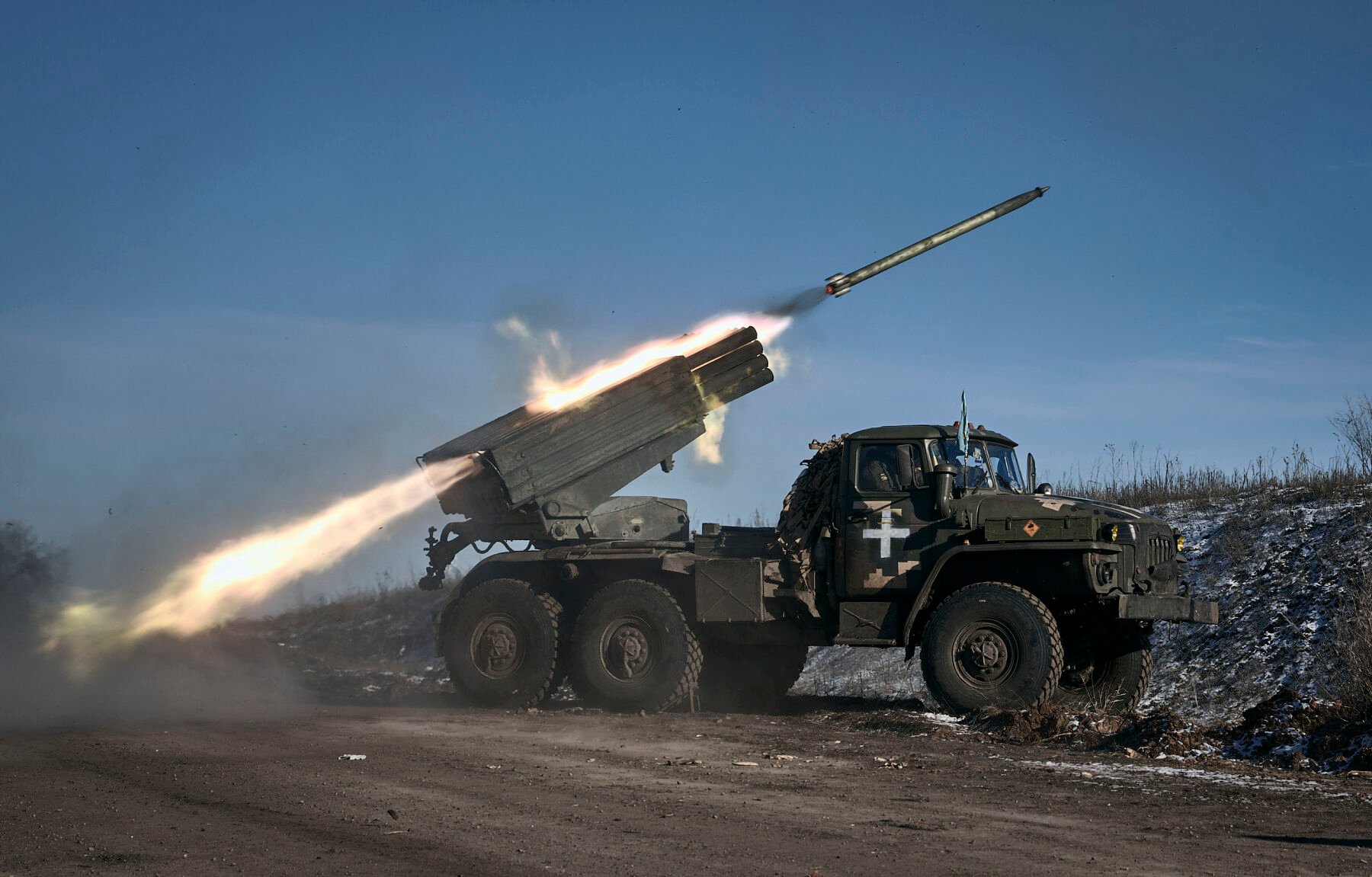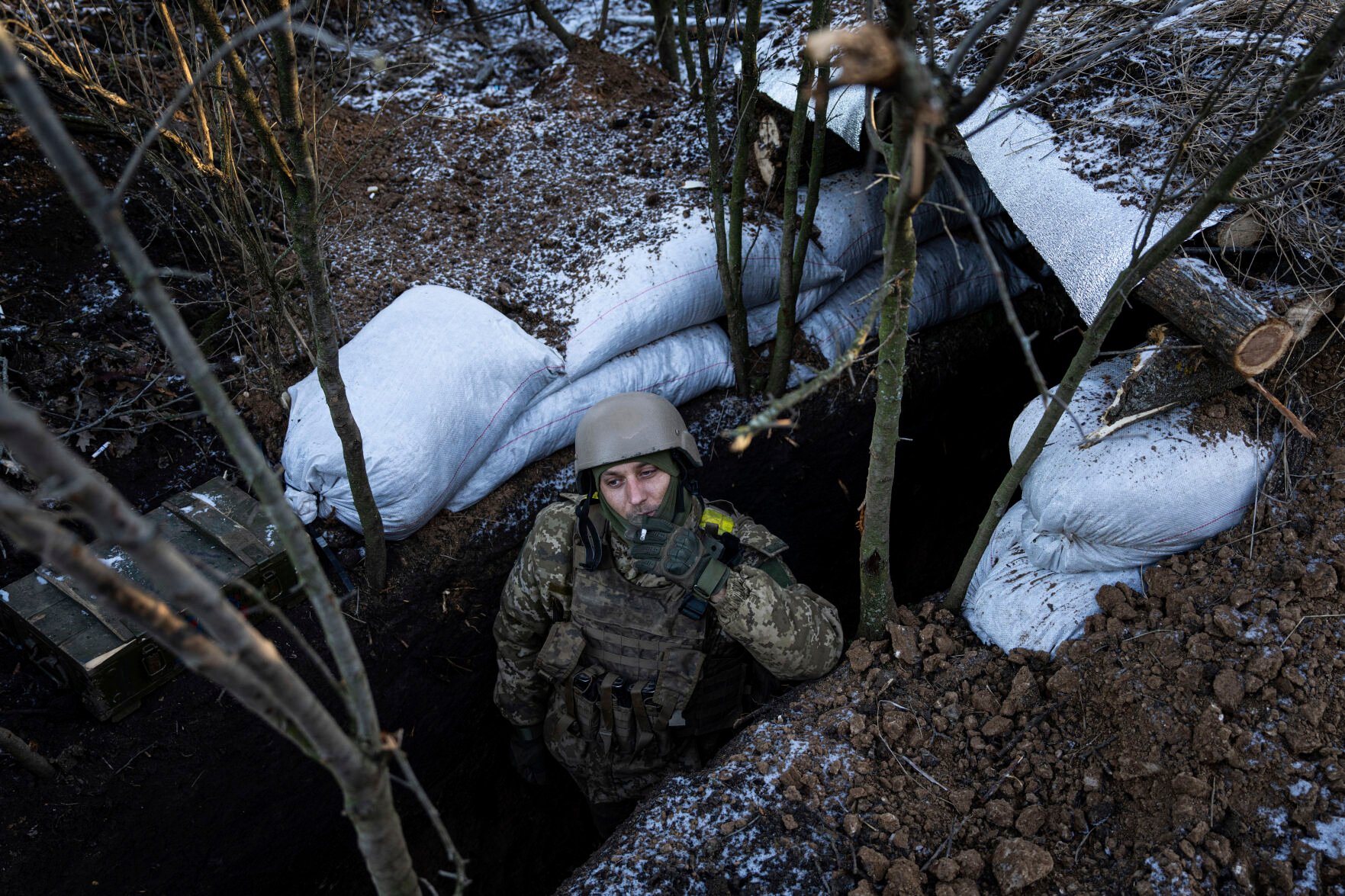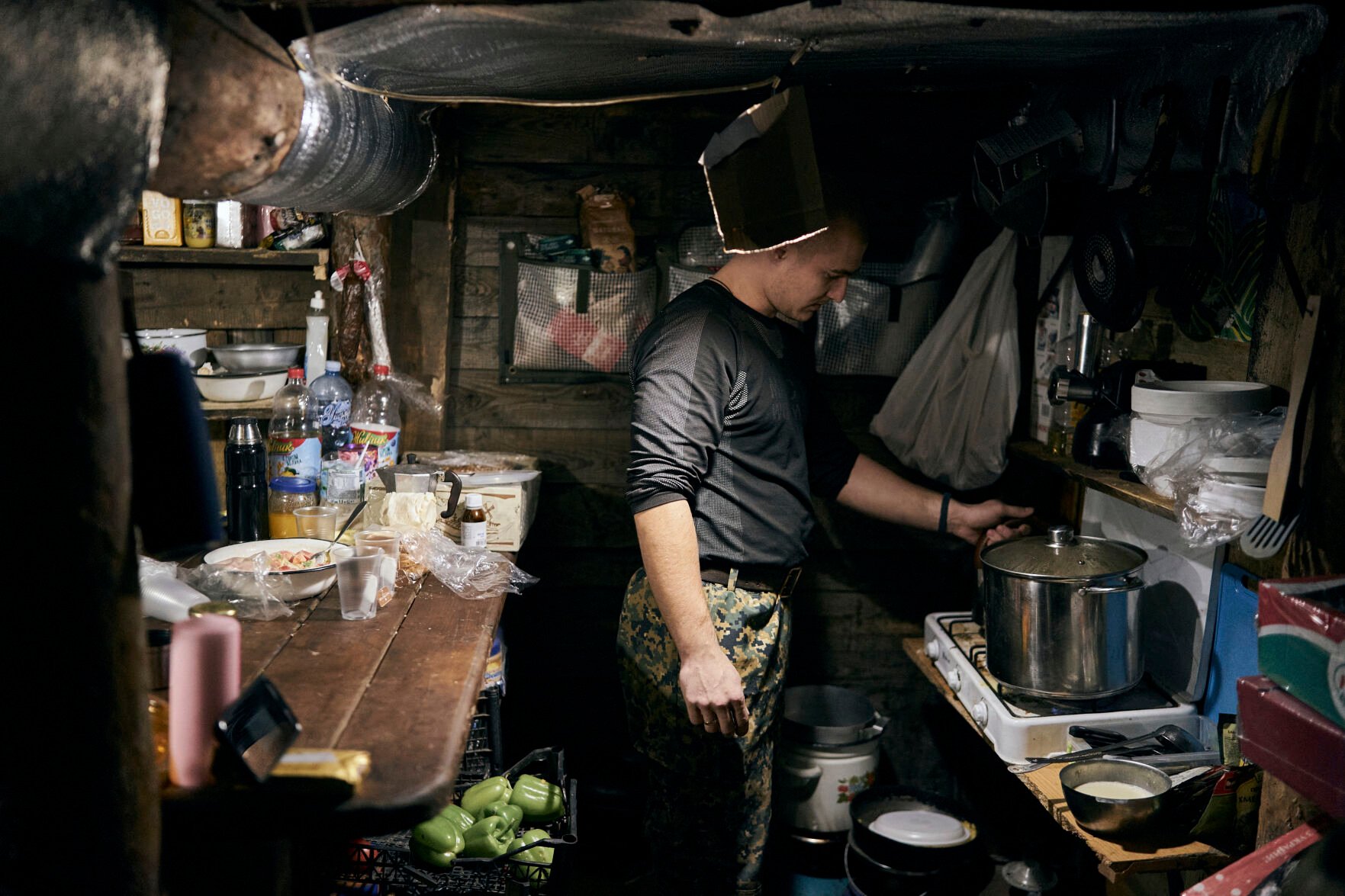Ukraine’s battlefields are freezing. Here’s what that means for the war
Temperatures in eastern Ukraine have been well below freezing in recent days, hardening the ground and opening a window for potential winter offensives by both sides.
But such pushes may not come, either now or during a more sustained cold spell.

LIBKOS via AP
A Ukrainian multiple rocket launcher fires at Russian positions Jan. 11 on the front line near Soledar, Donetsk region, Ukraine.
Military analysts say that while the shift from muddy to frozen terrain is important in enabling the use of wheeled combat and support vehicles, it’s just one of many factors commanders would consider before a major new assault.
More important are the availability of reserves, equipment and ammunition, and the need to create weak spots in enemy lines.
Both sides are being stretched by slow but resource-sapping offensives. Russian forces are trying to take Bakhmut and nearby Soledar, while Ukrainian troops are attacking Kreminna and Svatove; all are small to mid-sized towns in the eastern Donbas region that Russia claims to have annexed but only partially occupies.
“The situation around Soledar and Bakhmut is forcing our command to use more reserves in this direction, so it may be that in the close future there won’t be enough left to conduct a big offensive in the south, from Zaporizhzhia, or anywhere else,” said Igor Levchenko, head of strategic modeling at New Geopolitics, a Kyiv-based think tank.
How the conflict evolves is likely to be determined less by changes in weather than by the relative success each side has in wearing down the other’s forces and reconstituting their own by spring, he said.

Evgeniy Maloletka, Associated Press
A Ukrainian serviceman smokes a cigarette Jan. 11 at his position on the front line near Bakhmut, Donetsk region, Ukraine.
The risk for Russia, according to a European defense official, is that in Bakhmut it makes only a minor tactical gain at the cost of huge personnel losses. A similar mistake in the summer left Russian forces exhausted and overstretched, opening the door for Ukraine to launch successful counteroffensives in the fall.
Though poorly trained, recently mobilized troops have shored up defenses around Kreminna and Svatove, slowing Ukraine’s advance. Taking Svatove would allow Ukraine to cut a key Russian logistics route for operations in the Donbas.
Newly announced supplies of armored fighting vehicles from the U.S., Germany and France, tanks from the United Kingdom and growing signs that NATO standard tanks could follow, would better equip Ukraine for a fresh offensive.
Ukraine’s general staff have been “masters of operational design” to date and will spend weeks or months setting conditions for the next, decisive phase of the campaign, Ben Hodges, a former U.S. lieutenant general and commander of the U.S. Army in Europe, said in emailed comments from Tbilisi, Georgia.
While Russia may aim to use mobilized recruits to prolong the war until support for Ukraine from its allies crumbles, “I don’t see that happening in 2023,” Hodges said. “Rather I see Ukraine liberating Crimea by the end of August.”
Russia’s President Vladimir Putin annexed the Crimean peninsula in 2014, turning it into a support base for his forces in the rest of occupied Ukraine. Some military analysts have expressed skepticism at Ukraine’s capacity to retake it.
While falling temperatures hardened the ground in the east, they’ve also been too low for soldiers to fight effectively away from shelter, as any offensive breakthrough would require.
“The human factor is far more important than the vehicles they can move” in winter, said Ed Arnold, a former British infantry officer now at the Royal United Services Institute, a London think tank. In freezing weather, morale, mobility and logistics all can get hammered, he said.
Frozen batteries for drones and radio sets have to be recharged twice as often, while low visibility can render unusable the surveillance drones needed for artillery to target defenses. With both sides running low on artillery shells, the need for precision offered by drones has already at times silenced guns along the front.
“What we call the ‘find’ aspect you need for any operation just becomes much more difficult,” Arnold said. “Even foot patrols that can normally cover 15-20 km in a day can suddenly only cover five, because they’re burning more calories, need to carry more food and just can’t do as much in the difficult conditions.”
Very low temperatures can favor defensive troops that enjoy effective logistics, according to Arnold, enabling them to maintain warmth and stockpile food at front-line positions for as many as 20 days. Those are luxuries unavailable to an advancing force, which has to be resupplied in real time.
The cold also can force errors, such as Russia’s decision to concentrate hundreds of troops in the relative warmth and comfort of a dormitory in Makiivka, within range of Ukraine’s HIMARS rockets. That saw 89 killed in a New Year’s attack, according to Russia’s defense ministry; Ukraine put the death toll much higher.
Most worrying to military planners, according to Arnold, is that a freeze can suddenly turn to thaw, leaving offensive troops exposed and unsupplied as wheeled support vehicles again become stuck in Ukraine’s notoriously glutinous mud. Tracked vehicles, such as tanks, can still operate but not if fuel tankers can no longer reach them.
Soldiers, similarly, would then be left without food, and artillery without ammunition or the ability to quickly move position.

